 The summer before COVID struck, my son was thrilled to be selected for an internship at NASA. He went into the program excited to get a taste of his intended career path; he came out head-over-heels in love with aerospace, armed with an infectious passion that would warm any mother’s heart. Ever since, he’s been begging me to make space cookies. I’m certain this moon landing cookie won’t end the pestering for more space cookies (truthfully, it will probably only encourage more), but I know it will make my son swoon.
The summer before COVID struck, my son was thrilled to be selected for an internship at NASA. He went into the program excited to get a taste of his intended career path; he came out head-over-heels in love with aerospace, armed with an infectious passion that would warm any mother’s heart. Ever since, he’s been begging me to make space cookies. I’m certain this moon landing cookie won’t end the pestering for more space cookies (truthfully, it will probably only encourage more), but I know it will make my son swoon.
The moon surface of this cookie was inspired by @Hani/Haniela's über-popular concrete cookies. While her technique is slightly different, I’ve adopted her concept of turning a flaw into a feature.
Supplies:
- Parchment paper
- Kitchen shears
- Silicone sheets* or equivalent
- Royal icing (I used AmeriColor gel paste to tint the icing):
- Flooding-consistency gray** (1 part Super Black/1 part Bright White)
- Stiff-consistency gray (1 part Super Black/1 part Bright White)
- Stiff-consistency white
- Tips:
- Scribe tool (or equivalent)
- Flat paint brush
- Tiny liner paint brush
- Gel colors for painting (I used AmeriColor): Bright White, Navy, Super Red
- Copper luster dust mixed with alcohol
- Thin uncooked noodle
- 1 (4 1/2 x 7-in/11.4 x 17.8-cm) rectangle cookie
*Whenever I purchase a silicone mold (such as this one), I always cut the molds apart so that I can use just the cavities that I need. For this project, I’ve repurposed the flat areas between the cavities (to create the moon craters) and the trim around the edge of the mold (for the border). If you do not have a silicone mold or don’t want to cut it up, I suspect thick acetate would work just as well.
**To create more texture in the surface of your moon, you want to encourage lots of air bubbles. Stir the flooding-consistency icing vigorously to mix in more air, and use the icing immediately.
Step 1: Create moon transfer
a. In order to create the necessary depth for the moon craters, the “flood” icing for this entire cookie is a royal icing transfer. Tear off a large piece of parchment paper (or use a precut sheet that fits a quarter-sheet pan). If you examine it closely, you’ll notice faint lines running through the paper. Orient these lines at a slight angle before taping your parchment paper to your work surface. The paper will ripple along these lines once the royal icing is applied. (Normally, this rippling would irritate me, but by positioning the paper strategically, this annoying quality actually contributes an interesting texture to the surface of the transfer.)
b. Using kitchen shears, cut the silicone (or equivalent) into several circles of varying diameter, anything from 2 inches to 1/8 inch (5.1 centimeters to 0.3 centimeter). Optionally, cut the trim from the edge of the silicone mold into two 4 1/2-inch (11.4-centimeter) strips and two 8-inch (20.3-centimeter) strips. Attach the silicone strips to the parchment paper with a small amount of gray royal icing to form the border of a rectangle measuring 4 1/2 by 7 inches (11.4 by 17.8 centimeters). (Alternatively, you can pipe a border of the same size.) Use a dab of icing to adhere the silicone circles to the parchment inside the rectangle, creating a random pattern for the moon craters.
c. Using flooding-consistency gray royal icing and a Wilton #8 tip (or equivalent), flood the area inside the border. (Note: Using a large tip allows more air bubbles to remain intact.)
d. Allow the icing to dry overnight. Place a piece of parchment paper on top of the transfer and cover it with a flat object (a cooling rack, the back of a sheet pan, a cutting board, etc.). Carefully invert the transfer so that the parchment paper that you originally piped on now sits on top (just as you would invert a cake tin when you want to transfer the cake to a cooling rack). Allow the transfer to continue drying for another four hours or until fully hardened. Once dry, peel the parchment paper away from the icing. There should be many popped air bubbles on the surface. Allow the transfer to dry for another eight hours before peeling away the border strips (if used) and removing the silicone circles with a scribe tool (or equivalent).
e. Using stiff-consistency gray royal icing and a PME #2 tip (or equivalent), pipe a line around part of a crater. Use a damp flat paint brush to drag some of the icing away from the circle, creating an intentionally messy brush embroidery effect. Continue piping lines in sections around the crater and applying the brush embroidery technique until the entire crater is circled. Repeat with the remaining craters. Allow the icing to dry completely.
f. Use a tiny liner paint brush and Bright White gel paste to add highlights along the rims of the craters. Brush on a small amount of gel paste, and then blur the paint slightly with a dry brush or your finger.
Step 2: Create astronaut transfer
a. The astronaut’s legs are piped in vertical layers (kind of like the legs of the Michelin Man). Using stiff-consistency white royal icing and a PME #2 tip (or equivalent), pipe two small boots (each should be about the size of a sesame seed) on a square of parchment paper. Allow them to crust for a minute before piping a small bead on top of the rear of each boot (for the ankles). Flatten the beads slightly with a damp paint brush. Allow the icing to crust for a minute before adding the next layer of beads and repeating the process to build up the legs. The beads should gradually increase in size with each layer until the two legs join together at the groin. Allow the legs to dry completely.
b. Detach the transfer, and lay it flat on the parchment paper square. Using the same icing and tip, pipe a larger bead at the groin. Shape the icing with a damp paint brush to form the bottom of the torso, and allow the icing to crust slightly. Continue building up the torso (just as you did the legs) with larger beads of icing until you reach about armpit level.
c. With the same icing and tip, pipe two wrinkled sleeves starting from the top of the shoulder. Allow the sleeve to crust slightly before piping the glove and shaping with a damp paint brush. Switch to a PME #0 tip (or equivalent) to pipe a thumb. Repeat for the other hand.
d. For the astronaut’s helmet, use stiff-consistency white royal icing and a PME #3 tip (or equivalent) to pipe a separate bead (not touching the body) slightly larger than the area between the shoulders. Smooth the top of the bead with a damp paint brush, and allow the icing to dry completely (i). Once dry, paint the top of the bead with copper luster dust mixed with alcohol (ii). With the same icing and a PME #25 tip (or equivalent), pipe a band of icing wrapping along the bottom of the bead (iii). This band will be the chin of the helmet. Shape the icing with a damp paint brush. Pipe another band that starts at one end of the chin band, extends over the top of the head, and ends at the other side of the chin band (iv). Finally, add another band wrapping over the forehead for the helmet’s visor. Smooth the ends of this band into the rest of the helmet with a damp paint brush (v). Using a PME #2 tip (or equivalent), pipe a bead of icing between the shoulders of the astronaut transfer. Gently press the chin end of the head into the wet icing, and shape the neck with a damp paint brush (vi). The final astronaut should measure about 1 inch (2.5 centimeters) in height when the transfer stands upright. Allow the icing to dry completely.
e. Meanwhile, pipe the life support pack on a separate area of the parchment paper using stiff-consistency white royal icing and a PME #2 tip (or equivalent). Pipe a rectangle about the same size as the astronaut’s torso from groin to shoulder. Smooth and shape the icing with a damp flat paint brush. Add a smaller rectangle at the top that is slightly shorter than the astronaut’s helmet. Smooth and shape the icing with the damp paint brush. Allow the life support pack to dry completely.
f. Once dry, remove the life support pack from the parchment paper. Flip it over so that the flat side is facing up. Pipe a line of stiff-consistency white royal icing on the flat side, and place the astronaut’s back on the wet icing so that the top of his helmet is slightly higher than the top of the pack. Gently press down on the astronaut’s torso to adhere the two transfers. Allow the icing to dry completely. (Once the icing dries, the pack makes a great hand hold. If desired, hold the astronaut vertically by the pack, and add a little more icing to round out the back of his helmet.)
Step 3: Create flag transfer
a. Using stiff-consistency white royal icing and a PME #1.5 tip (or equivalent), pipe a small rectangle measuring roughly 5/8 by 3/8 inch (1.6 by 1.0 centimeter) onto a small square of parchment paper. Fill in the rectangle with lines of icing. Immediately smooth the icing within the rectangle with a damp flat paint brush so that the icing fills the border. Allow the flag transfer to dry completely.
b. Once dry, paint the flag with undiluted gel colors. Begin by painting the blue rectangle with Navy gel paste. Use a tiny liner paint brush to paint the red stripes with Super Red gel paste. Then, add tiny dots of Bright White gel paste to the blue rectangle. Allow the gel paste to dry before handling the transfer.
c. For the flag pole, break off a small piece of uncooked noodle that is slightly taller than the astronaut transfer. Using stiff-consistency white royal icing and a PME #1.5 tip (or equivalent), pipe a line of icing near the top of the noodle that is the length of the short side of the flag transfer. Press the left edge of the flag transfer into the icing. Allow the icing to dry completely.
Step 4: Attach transfers to cookie
a. Using stiff-consistency gray royal icing, attach the moon surface transfer to the cookie. If desired, use a wet flat paint brush to cover the vertical edges of the cookie with gray icing. This will camouflage the seam between the “flood” and the cookie.
b. Using the same icing and a PME #1.5 tip (or equivalent), pipe a dab of icing on the bottom of the astronaut’s feet. Gently press the astronaut into one of the craters. If desired, use a small prop (like small cookies or an icing coupler) to support the astronaut while the icing dries.
c. With the same icing and tip, pipe a small mound next to the astronaut. Holding the flag transfer by the flagpole, insert the bottom end into the mound of stiff icing.
Finished!
Working with royal icing can be such a battle; I love that this cookie highlights and celebrates its imperfections.
Source: Haniela's, Concrete Texture Royal Icing tutorial


Samantha Yacovetta began cookie decorating in 2013. While working at a local bakery, Samantha became captivated by cookie art when a customer requested princess-themed cookies. Attracted initially to the precision of cookie decorating, Samantha soon found that the limitless design opportunities turned it into her artistic passion. Samantha began regularly stocking the bakery case with decorated cookies and for several years sold cookies through her own company, Aproned Artist, a cottage food operation. Having retired from the business life, Samantha now enjoys making cookies just for fun from her home in San Jose, California, USA. To learn more about Samantha, please check out her Cookie Connection portfolio, her Facebook page, and her past Every Little Detail tutorials here.
Photo and cookie credits: Samantha Yacovetta
Note: Every Little Detail with Aproned Artist is a monthly Cookie Connection blog feature written by Samantha Yacovetta focused on the special little details that make big statements in cookie design. This article expresses the views of the author, and not necessarily those of this site, its owners, its administrators, or its employees. To read all of Samantha's past Every Little Detail tutorials, click here. And to see all of Cookie Connection's tutorials, click here.

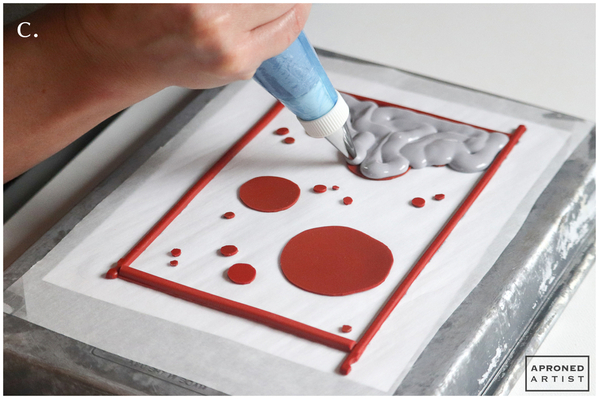
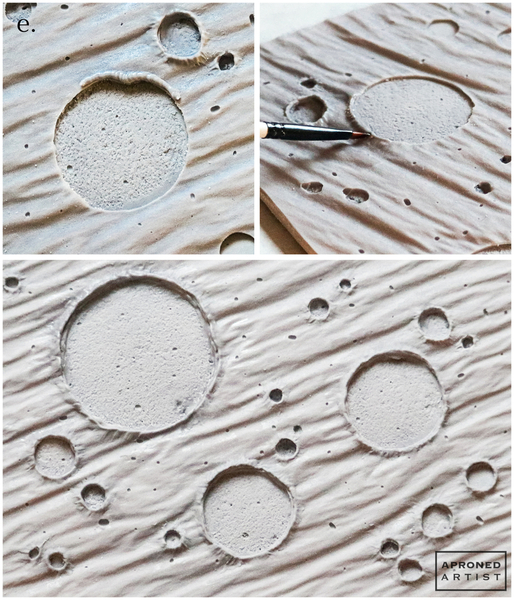


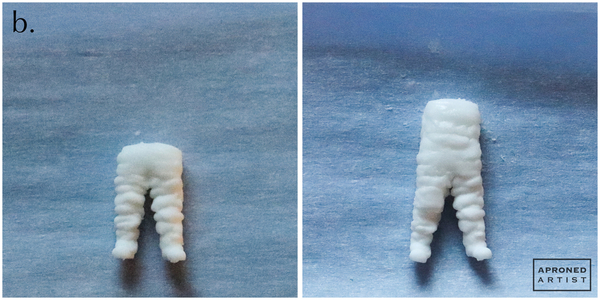
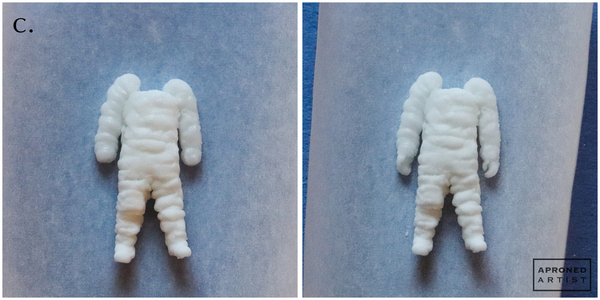
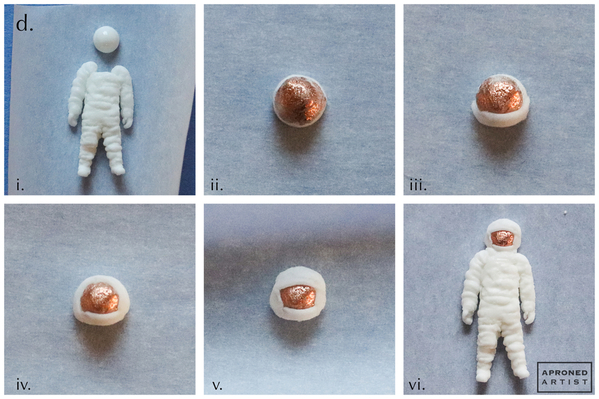



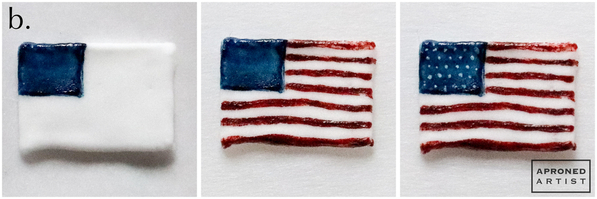
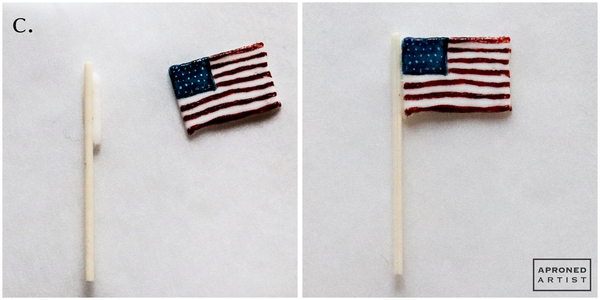



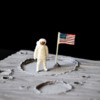
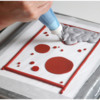
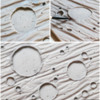

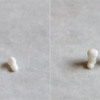
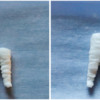
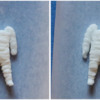
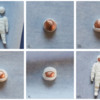
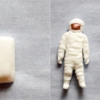

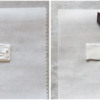
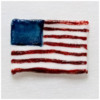
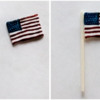

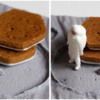

Comments (30)